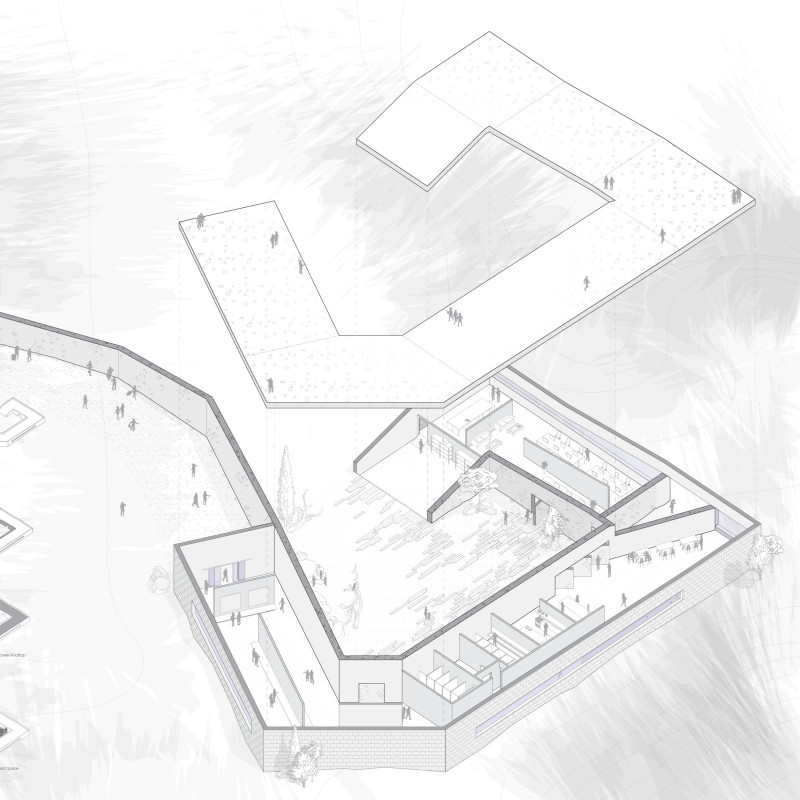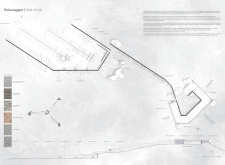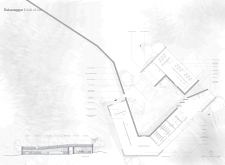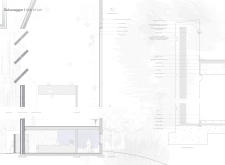5 key facts about this project
Öskuveggur, or "Wall of Ash," is located in Iceland, close to the Black Lava Fields, Hverfjall Volcano, and Mývatn Lake. The design aims to connect with the surrounding landscape while providing essential facilities for visitors. Within the centre, there is a sunken carpark, an information area, a public gallery, a café, and offices. Each element contributes to an engaging experience that highlights the region's geological features.
Materiality
The main material used is porous volcanic ash concrete, which serves both structural and visual purposes. This concrete is designed with volcanic ash, creating a connection between the building and the Black Lava Fields. Its porous quality allows the structure to blend with its environment, forming a bridge between architecture and nature.
Basalt stone masonry also plays a significant role in the design. The use of this material resonates with the nearby Hverfjall Volcano. It captures the essence of the local geology. Large windows in the café and office areas frame views of the volcano, enhancing the interaction between the interior spaces and the surrounding landscape.
Mývatn Lake influences the courtyard design, where driftwood boarding is used to add a softer touch. This material contrasts with the stronger exterior elements. The courtyard serves multiple purposes, allowing for outdoor dining and potential views of the northern lights, inviting visitors to embrace the natural beauty that surrounds them.
Dried seaweed insulation is incorporated to improve energy efficiency, aligning the building with sustainable practices. Geothermal floor heating maintains a comfortable indoor temperature, responding to the challenges of Iceland's cold winters. The use of compacted earth further integrates the structure with the landscape, providing both stability and an organic appearance.
Öskuveggur illustrates a thoughtful relationship with its geographical setting. The careful choice of materials and design layouts reflects the rugged beauty of Iceland. Details like the driftwood in the courtyard echo the natural forms found in the area, creating a space that feels connected to the environment.






















































